‘In the room the women come and go / Talking of Michelangelo’: the couplet that comes 12 lines into T.S. Eliot’s first great poem, The Love Song of J. Alfred Prufrock (1915), might not encourage us to take his interest in art too seriously. The implication is that Prufrock feels that the women were engaged in something essentially trivial, and his ambivalence about the feminisation of fine art was echoed in Eliot’s uncollected poem of the previous year, ‘Afternoon’. ‘The ladies who are interested in Assyrian art / Gather in the hall of the British Museum’, the poem begins, then shows the ladies giving off clouds of perfume and steam from their wet clothes, before disappearing ‘beyond the Roman statuary / Like amateur comedians across a lawn’. If amateur art appreciation was for Eliot the target of satire, no more was he an unqualified admirer of specialised art criticism. In a letter to Ezra Pound in 1915, Eliot wrote, ‘I distrust and detest Aesthetics, when it cuts loose from the Object, and vapours in the void’. In the same letter: ‘please tell me who Kandinsky is.’ Perhaps, then, we should assume that Eliot’s interest in contemporary developments in avant-garde art was minimal.
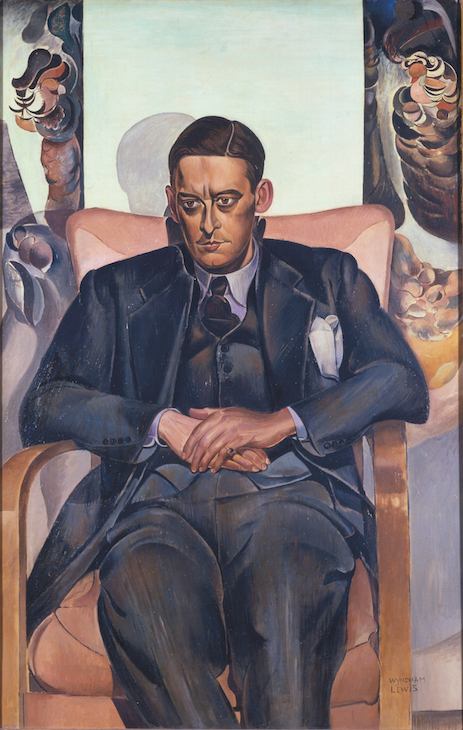
T. S. Eliot (1938), Percy Wyndham Lewis. Durban Art Gallery. © The Wyndham Lewis Memorial Trust/Bridgeman Images
But this would be to ignore his deep immersion, during the crucial years when his mature style was formed, in a milieu of intense artistic excitement where developments in painting and sculpture assumed a dominant role in the discussion of advanced art and culture in general. Eliot frequented social circles which included the Vorticists and artists connected to the Bloomsbury group; his first poetic publications in England appeared in Blast: Review of the Great English Vortex, edited by Wyndham Lewis; and in a letter of 1915 to the Boston art collector Isabella Stewart Gardner, he writes of a close interest in modern painting, praising Edward Wadsworth as ‘one of the most interesting of the radicals […] whose work I like exceedingly’, and mentioning in the same letter the work of Lewis, Henri Gaudier-Brzeska, and Jacob Epstein.
What’s more, his own early poetry was often read, by critics hostile as well as sympathetic, in connection with epoch-making revolutionary movements in the visual arts. In 1916, on the publication of Prufrock and Other Observations, Arthur Waugh described Eliot as one of the ‘literary Cubists’, and four years later an anonymous reviewer of Eliot’s Poems 1920 accused him of writing poetry ‘as blurred and meaningful as any post-impressionist artist could wish for’. There is a certain irony in Eliot’s techniques for composing poetry being compared to parallel developments in the visual arts, not only because Eliot’s knowledge of European modernism was somewhat second-hand, but also because his verse of this period is intensely agonised about visual experience, as in ‘First Debate between the Body and Soul’:
The eye retains the images,
The sluggish brain will not react
Nor distils
The dull precipitates of fact
The emphatic mud of physical sense
The claims of the visual seemed, here as elsewhere in Eliot’s early poetry, to provoke discomfort and mental blockage.
Nonetheless, and despite his distrust of aesthetics, Eliot was happy to take a determined position in the key aesthetic battle of the period during and after the First World War, between Vorticism and Futurism. Three times in essays of the 1910s he writes disparagingly of Futurism, with its pledge to ‘Destroy the cult of the past’ – a terrifying, anarchic prospect for Eliot. His influential essay ‘Tradition and the Individual Talent’ (1919) has persuasively been read as an attempt to establish, contra the Futurists, how an avant-garde movement could at once be radically new and find fruitful continuities with the art of the past. When Eliot writes that a modern development in artistic style ‘does not superannuate either Shakespeare, or Homer, or the rock drawing of the Magdalenian draughtsman’ (that is, the artist responsible for the works made around 15,000 years ago and found in caves in the Dordogne), he treats literature and visual culture as part of a single panorama. When he writes that the ‘historical sense’ involves grasping that ‘the whole of the literature of Europe from Homer […] has a simultaneous existence and composes a simultaneous order’, he reconfigures literary tradition almost in the style of an avant-garde painting – a domain in which the practice of ‘simultaneity’ had become a central theme in the years leading up to this essay.
The first draft of The Waste Land even included a passage (cut from the published text) in which a contemporary painter associated with Futurism makes a cameo appearance, as a disreputable figure with whom the clerk who seduces a typist in part III of the poem has been consorting:
He, the young man carbuncular, will stare
Boldly about, in ‘London’s one café’,
And he will tell her, with a casual air,
Grandly, ‘I have been with Nevinson today’.
C.R.W. Nevinson, often to be found in the Café Royal, was Marinetti’s foremost supporter in London, and co-author of the Futurist manifesto Vital English Art (1914) that caused Lewis to expel him from the Rebel Art Centre, expediting the formation of Vorticism. His appearance in the poem’s early draft makes him seem at once ridiculous and mildly villainous, and his association with the ‘young man carbuncular’ marks Eliot’s decisive insult against the Futurist movement.
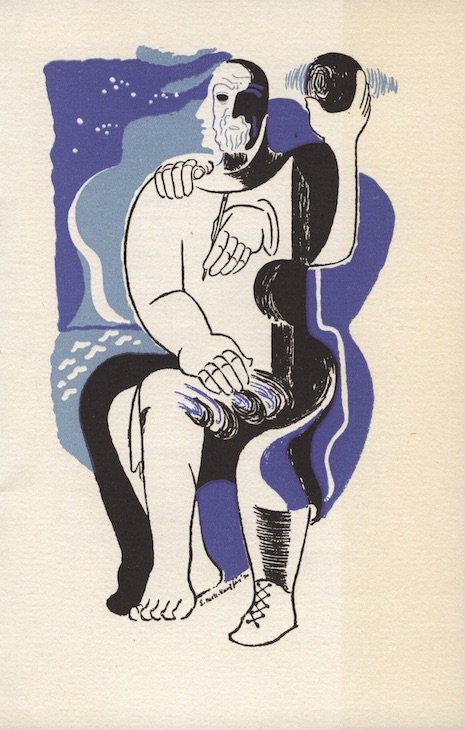
Drawing by Edward McKnight Kauffer to illustrate Marina by TS. Eliot, published by Faber in 1930. © Simon Rendall
From the later 1920s onwards, Eliot’s involvement with visual art deepened when some of the most important poems of his middle years were published with illustrations by contemporary artists. In a series of booklets called Ariel Poems, which the company distributed as Christmas greetings, Faber & Faber issued six Eliot poems: The Journey of the Magi (1927), A Song for Simeon (1928), Marina (1930), and Triumphal March (1931), all with illustrations by Edward McKnight Kauffer; Animula (1929) with wood engravings by Gertrude Hermes; and The Cultivation of Christmas Trees (1954), with illustrations by David Jones. The last is perhaps the pick of the bunch, with Jones’s drawing of a wounded stag in a forest, and his inscription to St Lucy in Latin and Greek, adding a layer of mythic intensity to the learned conversational style of Eliot’s poem. But each of the Ariel poems, which were reissued in a single volume with their original illustrations by Faber in 2014, makes the form of the illustrated text its own; the relationship between Eliot’s poems of spiritual recognition and McKnight Kauffer’s sharp-edged, graphic designs creates a fruitful dialogue between word and image.
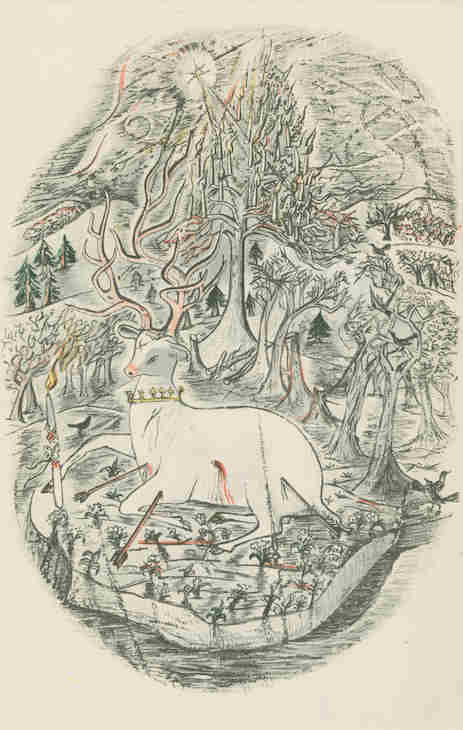
Drawing by David Jones to illustrate The Cultivation of Christmas Trees by T.S.Eliot, published by Faber in 1954. © The Trustees of the David Jones estate
That is more or less the extent of Eliot’s own active relation to the visual arts, so far as it can be reconstructed from his writings. But there exists a much larger number of artworks that have been inspired by him.
As his fame grew, Eliot was the subject of many portraits. The most memorable of them include Jacob Epstein’s 1951 bust, modelled in clay and cast in bronze, for which Epstein described the sitter’s expression as one of ‘grave courtesy’, and works by Wyndham Lewis, Patrick Heron, and Cecil Beaton. Lewis painted Eliot twice, and produced a larger number of drawings, and in each of them Eliot’s features appear angular and geometric, in keeping with Lewis’s first impression of Eliot as a ‘sleek, tall, attractive transatlantic apparition – with a sort of Gioconda smile’. His first oil portrait of Eliot from 1938 was rejected by the Royal Academy for their Summer Exhibition, possibly on the grounds of the phallic references Lewis placed on the screens that occupy the left and right background behind Eliot’s head, provoking a brief burst of media controversy. About the second, painted in 1948, Eliot wrote: ‘I shall not turn in my grave if, after I am settled in the cemetery this portrait is the image that will come into people’s minds when my name is mentioned’ – and he purchased the picture with £300 of his own money on behalf of Magdalene College, Cambridge, to mark his election as an Honorary Fellow.
In Patrick Heron’s semi-abstracted portrait in oils of 1949, Eliot’s image is fractured into cubist-style planes of simultaneous bright colour. The picture was ‘painted from memory very slowly, after a period of nearly three years’ according to the artist, and in 2013 the National Portrait Gallery exhibited a series of preparatory studies for the portrait, showing the stages of development it passed through. For Heron, the experience was like ‘looking into the most conscious eye in the universe […] into the very centre of contemporary consciousness’; when Eliot saw Heron’s initial drawings he is reported to have said, ‘It’s a cruel face, a cruel face: a very cruel face! But of course you can have a cruel face without being a cruel person.’
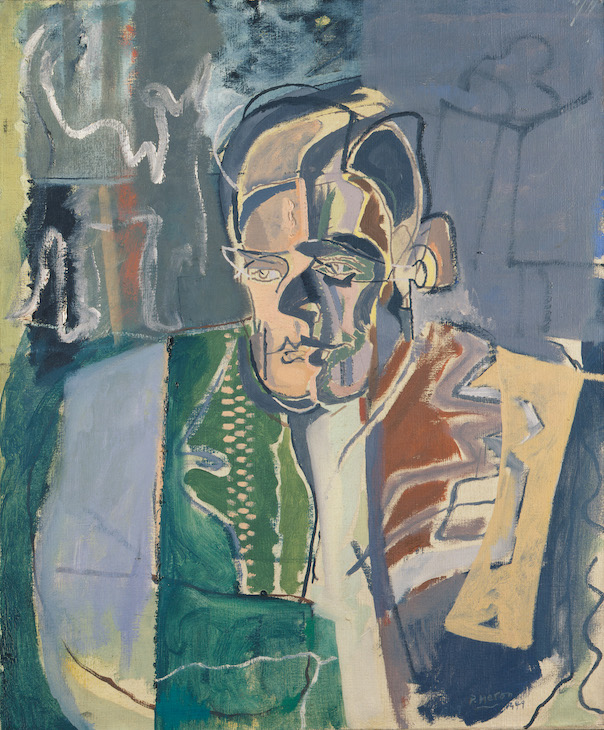
T.S. Eliot (1949). Patrick Heron. National Portrait Gallery, London. © The Estate of Patrick Heron/All Rights Reserved, DACS 2018
And in Cecil Beaton’s 1956 photographic portrait, Eliot appears in triple exposure, rotating from three-quarter view to full face, an effect that imparts an odd vulnerability to the impersonal literary icon. Beaton reported that Eliot had worried about what collar to wear for the sitting: ‘a soft one would look untidy and Bohemian, and yet he could not bring himself to be perpetuated in a starched one’; but having seen the finished portrait Eliot found it an ‘astonishingly successful effect’. It is striking that both Heron and Beaton were impelled to represent Eliot from multiple points of view at once – as if the challenge of capturing the consciousness of the most famous poet in the world, and penetrating his strait-laced self-presentation, demanded an extension of the normal techniques of image-making.
Other artists in the same period found inspiration in Eliot’s writing, and in this regard it was The Waste Land that was most influential. For R.B. Kitaj, perhaps the most literary of 20th-century artists, Eliot and Ezra Pound provided a constant example of artistic practice, with which Kitaj strongly identified. Already in 1985 Marco Livingstone noted that their effect on his thinking was ‘sometimes for worse, in the difficulties created by their private and arcane frames of reference’, and 10 years later it was Kitaj’s habit of explaining at length his own literary allusions and coded references that enraged critics of his major retrospective at the Tate Gallery in 1994. Two major canvases, however, reveal the powerful effect that The Waste Land had on Kitaj’s imagination across many years: Tarot Variations (1958) and If Not, Not (1975–76). For Kitaj it was ‘the compendious nature’ of Eliot’s work that excited him, the attempt to ‘try to get the whole world in’, and If Not, Not reflects this ambition. It is an attempt to paint a new Waste Land after the Holocaust: the gatehouse of Auschwitz stands above a beautiful landscape of trees and hills, inspired by La Tempesta by Giorgione, but here strewn with despairing or dying figures. In Kitaj’s words, the theme is ‘the waste land as an antechamber to hell’, with the ‘waste-like middle ground’ and the pools of stagnant water reflecting Eliot’s imagery of infertility and the difficulty of renewal. The glasses-wearing figure in the bottom left has sometimes even been taken for an image of Eliot himself, although the hearing aid he wears would encourage us instead to see it as an image of the artist himself. In 1997, Kitaj’s painting was adapted into a spectacular tapestry, almost 30 times the size of the original painting, at seven metres by seven metres (at the time the largest tapestry in the world), that hangs in the entrance hall of the British Library.
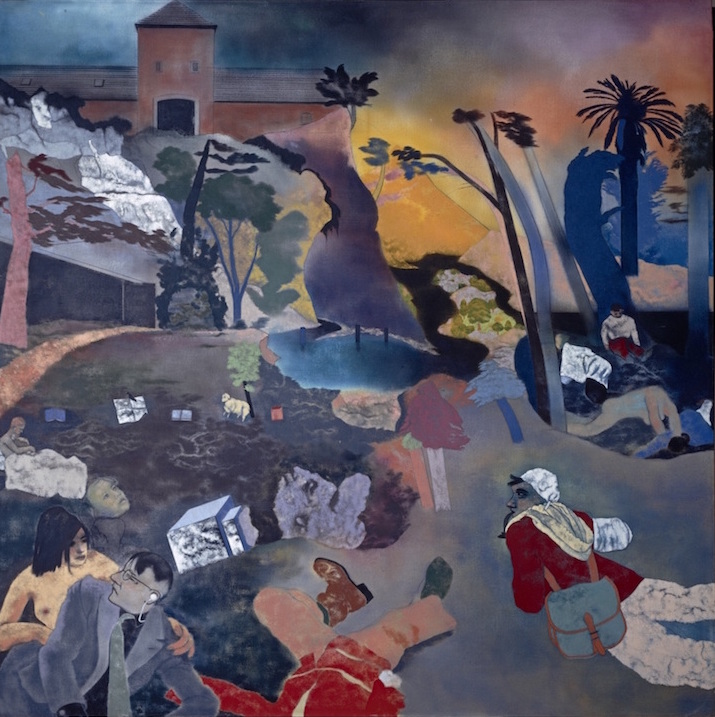
If Not, Not (1975–76), R.B. Kitaj. Scottish National Gallery of Modern Art. © R.B. Kitaj
If Not, Not is one of the works that will feature in ‘Journeys with “The Waste Land”’, an exhibition that opens at Turner Contemporary in Margate this month, along with the portrait by Heron and the bust by Epstein already mentioned. Margate is an appropriate venue: ‘On Margate Sands / I can connect / Nothing with nothing’, Eliot writes in part III of The Waste Land, at the low-point of emotional desolation that grounds the poem. That section of the poem was written in Margate during a period of convalescence Eliot spent in the town in 1921 – reportedly while sitting in the Nayland Rock Shelter on the beach-front.
Some of the works included in the exhibition explicitly engage with Eliot and his writing, such as Philip Guston’s grim deathbed painting East Coker: T.S.E. (1979); David Jones’s painted inscription Nam Sibyllam (1958), made as a gift for Eliot, which combines the text from Petronius that is The Waste Land’s epigraph with the opening lines of the poem and other phrases connected to the Grail myth; Graham Sutherland’s two Illustrations for T. S. Eliot (1973); and Vibeke Tandberg’s The Waste Land (2007), which consists of 36 collages in which the artist has cut out each of the words of the poem, and re-organised them alphabetically and in groups, at once fragmenting Eliot’s poem of ‘broken images’ even further and bringing its underlying verbal structure to light.
Other works relate more tangentially to the poem, such as Turner’s The Golden Bough (1834), the painting that did much to inspire James Frazer’s anthropological study of the same name first published in 1890, a crucial source for The Waste Land’s mythical framework, or Cy Twombly’s Quattro Stagioni: A Painting in Four Parts (1993–95), which echoes Eliot’s theme of cyclical rebirth. Other works, such as those by Edward Hopper, Käthe Kollwitz, Paul Nash, Leonora Carrington or Paula Rego, reflect the broad cultural resonance of Eliot’s vision of destructive modernity in extremis. It will perhaps be in the works where Eliot is not overtly alluded to that the real extent of his influence will become clear, demonstrating how in the early and mid 20th century Eliot became, as Auden wrote of Sigmund Freud, ‘no more a person now / but a whole climate of opinion / under whom we conduct our different lives.’
‘Journeys with “The Waste Land”’ is at Turner Contemporary, Margate, until 7 May.
From the February 2018 issue of Apollo. Preview and subscribe here
Unlimited access from just $16 every 3 months
Subscribe to get unlimited and exclusive access to the top art stories, interviews and exhibition reviews.

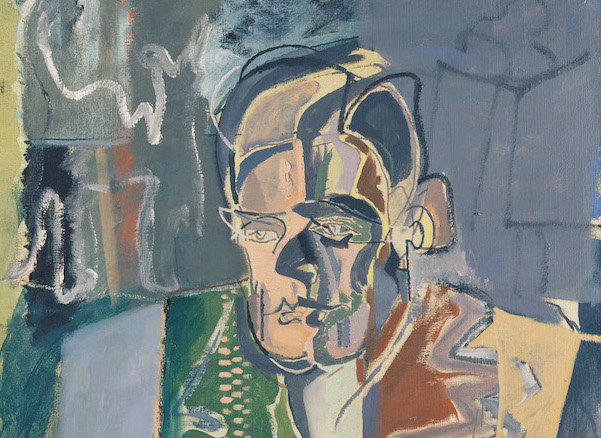
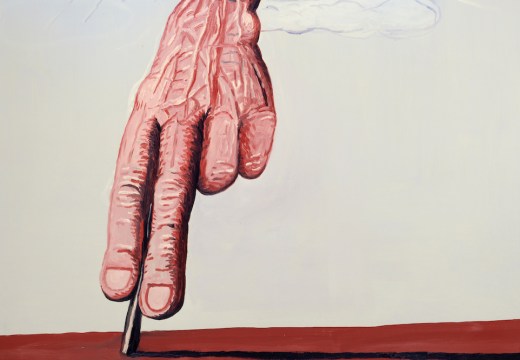

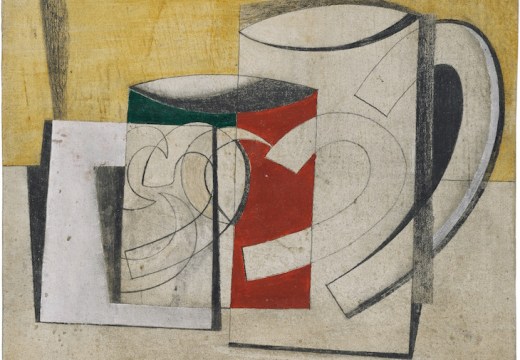








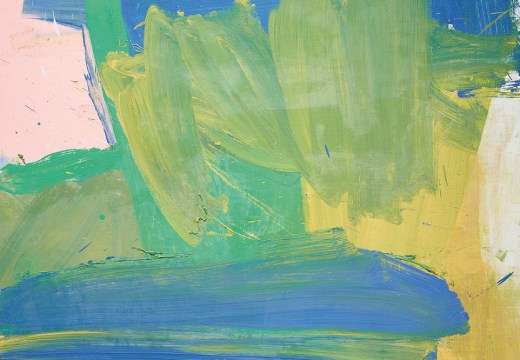
![Masterpiece [Re]discovery 2022. Photo: Ben Fisher Photography, courtesy of Masterpiece London](http://www.apollo-magazine.com/wp-content/uploads/2022/07/MPL2022_4263.jpg)
Why are fathers so absent from art history?